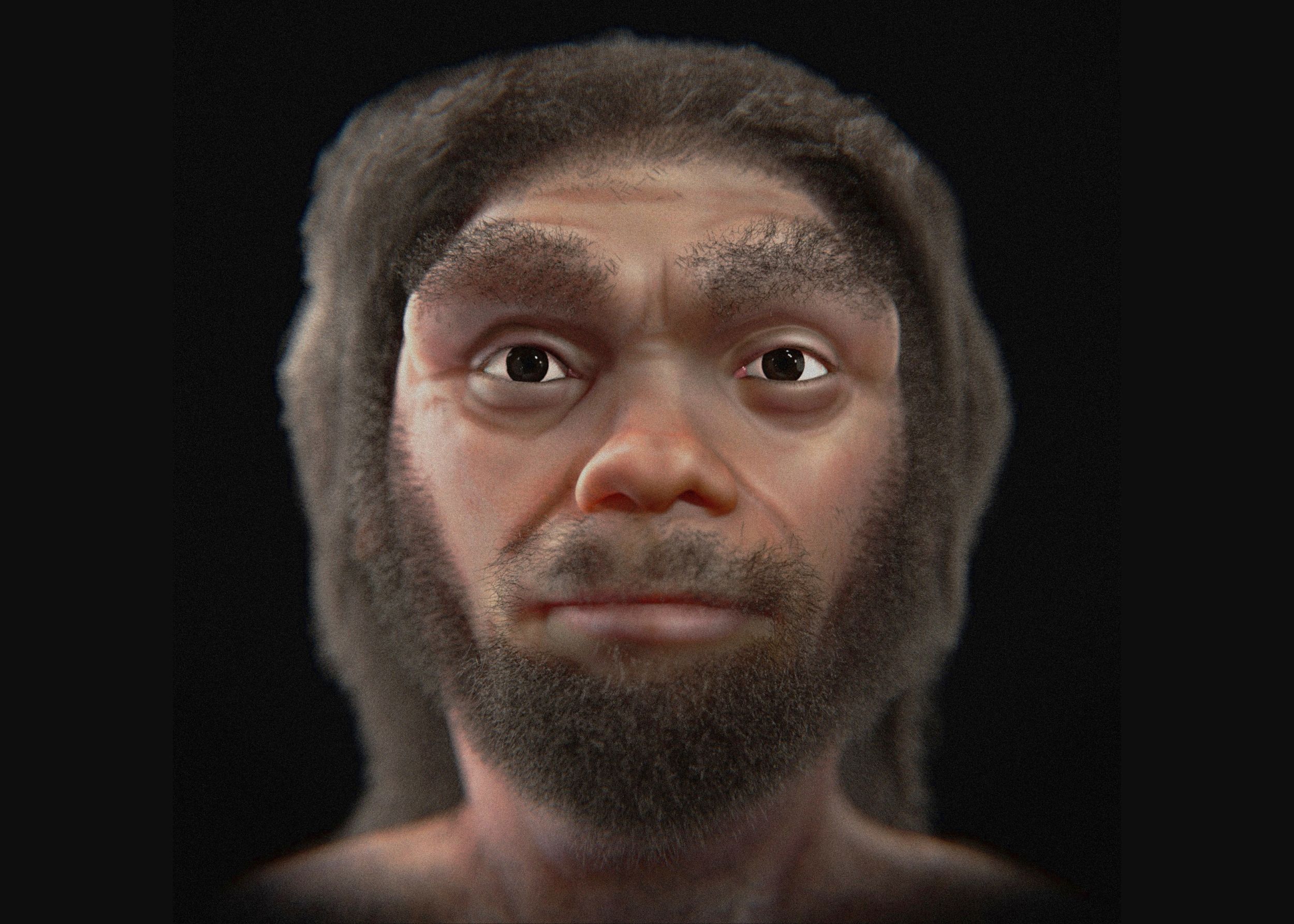
Approximately 150,000 years ago, in the cold woodlands of northern China, there lived a big-headed human species called Homo longi, also known as “Dragon Man.”
Despite its unusual appearance, scientists have recently found out that this species is closely related to modern humans. A new reconstruction of Dragon Man’s face now gives us a glimpse of what this extinct human might have looked like, as reported by IFL Science.
Dragon Man got its name from the Heilong Jiang River, which means Black Dragon River, in China’s Harbin province.
This species was first recorded in 1933 when builders digging for a bridge stumbled upon a really well-preserved skull. Back then, they didn’t realize it, but in 2021, researchers figured out that this skull belonged to a completely new human species.

Reconstruction of 146,000 years old Dragon Man’s face
The skull, dating back to at least 146,000 years ago, belonged to someone who lived in East Asia when our ancestors, the modern humans, were coexisting with other closely related beings such as Neanderthals and Denisovans.
This individual, part of the Homo longi species, stood out due to its massive size and distinctive facial features: square eye sockets, flat and low cheekbones, and especially large teeth.
Initially, it might seem like Homo longi was somewhat different from the other three hominids living around the same time.
Yet, scientists think that Dragon Man might actually be even more closely related to modern humans than our well-known relatives, the Neanderthals, according to IFL Science.
To show what this ancient human might have looked like, Brazilian expert Cícero Moraes, known for reconstructing faces like “Hobbit” humans and Ancient Egyptian pharaohs, used data and images from the 2021 study to create a digital model of the skull.
To complete the picture, they also included the full skull of another ancient human, a Homo erectus, to fill in the gaps in the jaw and some missing teeth of Homo longi.
Homo longi had the largest head among all known early humans
Based on the completed model, Moraes determined that Homo longi had a head circumference of 65.1 centimeters (25.6 inches). This makes Dragon Man stand out with the largest head among all known early humans, comparable to the head sizes of gorillas and lions.
Experts who studied the skull a couple of years ago suggest that the species’ massive size could be a response to the extremely cold temperatures in Harbin, reaching as low as negative sixteen degrees Celsius (3.2 degrees Fahrenheit) during winter.
The study presenting the facial reconstruction has been published on Ortog Online.